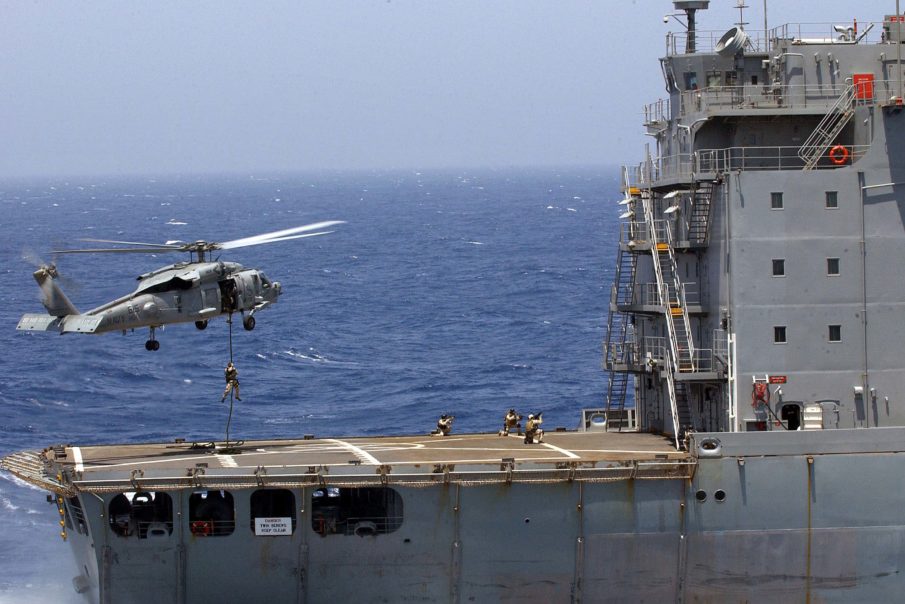According to U.S. Special Operations Command Europe (SOCEUR), as of July 21st, a jointly-hosted U.S. and Ukrainian multinational maritime exercise was underway in the Black Sea. The exercise, called “Sea Breeze 2017,” was ostensibly intended to “enhance interoperability” between the participating nations, while also “strengthening maritime security within the region,” according to a video posted to SOCEUR’s Twitter account (@US_SOCEUR).
One goal that was not explicitly mentioned in the press release, but which was nonetheless surely intended to be felt by Moscow, was to demonstrate solidarity between the United States and Ukraine in the face of Russian aggression. In other words, the exercise sends a message to Russia that the United States has an interest in the region and will exert its influence as it sees fit (even if it undermines Russian interests).
To put it another way, Sea Breeze 2017 is a seemingly mundane multinational maritime exercise that in reality is meant to send a significant, unmistakable geostrategic “shot across the bow” to Russia.
During the exercise, U.S. Naval Special Warfare personnel — SEALs and Special Warfare Combatant Crewmen (SWCC) — trained side-by-side with their Ukrainian Navy special operations forces (SOF) counterparts. The latter were likely the Ukrainian Naval Infantry’s small spetsnaz (“special forces”) force known as the 73rd Marine Spetsnaz Detachment. These operators are commonly referred to as “SEALs” within the Ukrainian military.
Of note, a former commander of the 73rd Marine Spetsnaz Detachment was reportedly killed in August 2014 in an operation in the Donbass region of Ukraine, near Donetsk. The fact that Ukrainian government forces are battling Russian-backed — and in some cases, actual Russian — separatist forces in the Donbass region of Ukraine, and that a unit involved in the fighting there is now jointly training with American forces in Russia’s backyard, adds symbolic weight to the joint American-Ukrainian exercise. It is no-doubt intended to be seen as strategic swipe at the Russians, and one delivered in the Russians’ own sphere of influence in the Black Sea.
The Naval Special Warfare aspect of the Sea Breeze 2017 exercise focused on visit, board, search, and seizure (VBSS) operations, which involve the boarding and searching of maritime vessels by law enforcement, naval, or special operations forces. VBSS is one of the U.S. Navy SEALs’ core maritime capabilities, and is used among other reasons to capture high-value targets traveling by sea, intercept illicit shipments of weapons and arms, and to free captives being held by pirates.
According to the U.S. 6th Fleet website, the 17th edition of exercise Sea Breeze was to take place in the Black Sea from July 10-22, 2017. It would involve “air, land, sea, and amphibious forces from 16 nations” participating in the U.S.-Ukrainian co-hosted exercise. Sixth Fleet also describes the exercise as “an annual recurring multinational exercise that will focus on a variety of warfare areas to include maritime interdiction operations, air defense, anti-submarine warfare, damage control tactics, search and rescue, and amphibious warfare.”
Sea Breeze was designed to “enhance flexibility and interoperability, strengthen combined response capabilities, and demonstrate resolve among allied and partner nation forces to ensure stability in the Black Sea region,” according to the Sixth Fleet public affairs office. This is the line that points to the brush-back of Russia, and will be read as such by the Russian government.
Already have an account? Sign In
Two ways to continue to read this article.
Subscribe
$1.99
every 4 weeks
- Unlimited access to all articles
- Support independent journalism
- Ad-free reading experience
Subscribe Now
Recurring Monthly. Cancel Anytime.
Nations participating this year include Belgium, Bulgaria, Canada, France, Georgia, Greece, Italy, Lithuania, Norway, Poland, Romania, Sweden, Turkey, Ukraine, the United Kingdom, and the United States. The U.S. Naval Special Warfare forces participating were those assigned to Naval Special Warfare Unit 2 based in Germany.
(Featured image courtesy of Wikipedia.)









